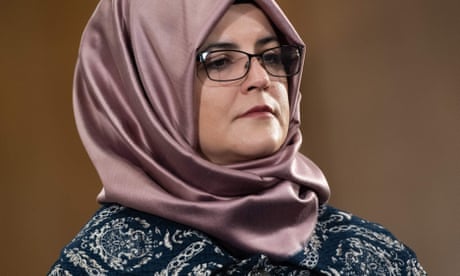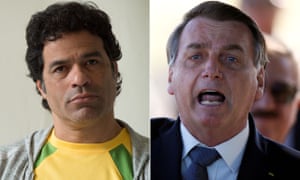Power of the Orishas : Santeria, an Ancient Religion From Nigeria, Is Making Its Presence Felt in Los Angeles
NEAR THE EAST END of the Silver Lake district, at the edge of Echo Park, three little shops--Botanica El Monte, Botanica El Indio and Botanica El Negro Jose--lie within a mile or so of each other. Signs above the doors advertise articulos religiosos , along with flowers, herbs and gifts, and the windows display statues of Jesus, the Virgin Mother and various Catholic saints. A few of these figurines are black, but most have a traditional appearance.
Yet when one enters El Monte, the largest of the botanicas , it is immediately apparent that this is no ordinary religious-goods outlet. Many of the customers are dressed in white, from their hats to their shoes, and they wear beaded bracelets around their wrists. Brightly colored beads and porcelain pots of exotic shapes and patterns are arrayed under glass counters. On the walls behind the counters are charms and shelves of candles inscribed with simple prayers, as well as packets of roots, leaves and other herbal remedies. Incense thickens the air.
In the back of the room, several fierce-looking, near-life-size wooden statues of black men and women sit in a semicircle around a pile of firewood--some holding drums, some with cigars stuck in their mouths, some draped in fine fabric and sporting crowns on their heads, some naked as newborn children.
Meet the black saints. They’ve come to live in the city of angels.
ADVERTISEMENT
B OTANICAS ARE MULTIPLYINGin Spanish-speaking neighborhoods throughout the Los Angeles area. There are dozens now, and they exist primarily to serve the followers of Santeria, a religion that shares its roots with voodoo. Several glimpses of the religion’s practices have surfaced in the media in recent months: In a summer thriller called “The Believers,” a Santeria priest performed a ritual animal sacrifice to help protagonist Martin Sheen. Last fall, devotees of the religion protested a Hialeah, Fla., ban on animal sacrifices, labeling the action religious persecution. Southern California’s small but growing Cuban community forms the core of the religion, and there are growing numbers of converts among black Americans and other Caribbean and Latin American nationals. As the Santeria presence grows, say local experts, there is likely to be an increasing amount of cultural conflict here, particularly over the practice of ritual animal sacrifice, which occupies a central place in the religion.
Precise figures on the number of Santeria believers in Southern California are impossible to come by, but estimates by sociologists and from within the religion range from 50,000 to 100,000 and rising. If these numbers, which include both casual and devout believers, are accurate, Los Angeles is now the third-largest center for Santeria in the United States, behind only Miami and New York. Subtle signs of its influence abound. A coconut with shells for eyes displayed in a Cuban restaurant may be more than a decoration: It’s also an image of the Santeria god Elegua. And salsa musicians clad in white and wearing colored beads may be Santeria priests. Salsa rhythms are based on African drumming used in Santeria, and a number of musicians have been drawn to the faith.
Brought from Nigeria to the New World between the 16th and 19th centuries by slaves from the West African Yoruba tribe, Santeria has survived hundreds of years of isolation from Africa with its belief system fundamentally intact. It has done so by secretly identifying Yoruba deities, known as orishas , with Catholic saints who represent similar virtues.
In Haiti, the Yoruba mingled with the Fon people from Dahomey to produce Vodun, or voodoo. In Brazil, Yoruba-based religion is known as Macumba, or Candomble. In Cuba, it is also known as Lucumi, after the Yoruba word for friend.
In Los Angeles, it goes mainly by Santeria, Spanish for “worship of saints.”
The religion of the Yoruba recognizes one supreme being who created the universe, but it holds that God entrusted the orishas with watching over the world. Orishas are similar to the ancient Greek gods in that each represents both a force of nature and a set of human behavorial characteristics, or archetypes. Initiates are baptized under the orisha with whom they have the closest personal affinity, as determined by an elder in a spiritual “reading,” and that orisha becomes the initiate’s guardian angel. Full-fledged priests, known in Santeria as santeros , are said to possess ache , the magical power of the saints.
All the Yoruba-based religions stress respect for ancestors and the use of ritual music, usually drumming, to communicate with the spirit world. Priests toss or roll cowrie shells and use other numerological methods to divine the future, and they make frequent offerings to the gods, including, at times, the sacrifice of live animals. Followers believe that the gods intervene in the day-to-day lives of believers, who might, on occasion, be possessed by the spirit of an orisha.
Over this African foundation have been laid the trappings of Catholicism. To a traditional Santeria believer, St. Peter is really Oggun, the West African patron of metals, miners and working people. The warrior orisha Chango is disguised as St. Barbara, the red-robed patroness of the Spanish artillery. This practice, known as syncretism, long enabled Africans to preserve their religion while appearing to Spanish Catholic priests to be converts.
Father Julian Gonzalez-Montenegro, a Cuban-born Catholic priest who did a routine census for the diocese in the Silver Lake district, noticed Santeria altars and shrines in many of the homes he visited. “Being a Cuban, I can spot it a mile away,” he says. “If you ask them, they’d probably say they’re Catholic. Being a priest, I know better.”
“I think (Santeria) is going to be a very significant institution in this city by the end of the century,” says Donald Cosentino, a lecturer in African folklore and mythology at UCLA. “This is not a cult. This is the local practice of a worldwide religion that has maybe 75 to 100 million followers. The winner of the Nobel Prize for Literature in 1986, Wole Soyinka of Nigeria, is a believer in the Yoruba gods. Most of his works are about the orishas. It may function like a cult in L.A., but how can you call it a cult if it is the majority religion in Brazil, in Haiti, in Cuba?”
THE FIRST TIME they told me about this religion, I said no way was I ever going to become involved,” Sammy admits. “I’m a college graduate, a scholar. This religion had the stigma of being for ignorant people.”
Ysamur Flores Pena, known to his friends as Sammy, is a santero , a Santeria priest of the orisha Oshun, the goddess of love. He was born and raised in Puerto Rico and moved to Los Angeles five years ago, accepting a job with the U.S. Department of Health and Human Services in East Los Angeles. When the job ended a year ago, a victim of budget cutbacks, Flores became a full-time priest.
He is 34, although his graying temples make him appear slightly older. He says he has about 40 godchildren--those he has initiated into the religion and who look up to him as a father figure--in Los Angeles, and another 80 or so in Venezuela, Puerto Rico and Miami. Many of his local godchildren are English-speaking black Americans, and some are Vietnamese. He says his is not a large “house,” or “family,” by Santeria standards.
Flores was born into a prominent family and has a master’s degree in education from Catholic University in Puerto Rico. He speaks English gracefully, with an almost musical accent, and prides himself on his scholarship about the history and teachings of Santeria, ably comparing it with Eastern religions, or Jungian psychology.
When Flores was about 17, he hurt his back. Out of curiosity as much as anything else, he paid a visit to a santero. The man did a reading, which consists of throwing 16 cowrie shells on a tray and interpreting the numerical patterns of how many land face up or face down. The patterns are believed to reveal the orisha’s divine answers to specific human questions. “He told me all about myself, and he had never met me before,” says Flores. “I decided there might be more to this than meets the eye.”
On the advice of the santero , Flores began to make regular offerings of fruits, other foods and occasionally live animals to the orishas , while continuing to receive orthodox medical treatments, including two operations. His back improved. “I became a fencing champion,” he says. “The doctors still don’t know how I did it.”
Many Santeria believers tell similar stories. They had a problem with their health, or love life, or job, or family. A friend or family member referred them to a santero for a reading. They went, followed his or her advice by praying and making offerings to the orishas and ancestors, and decided that it worked to solve their problems. Some joined the santero’s “family” by becoming initiated into the religion. Eventually, a few were “called” to become priests.
Like most priests, Flores earns a living by performing consecrations and ceremonies, and he accepts gifts from his godchildren, though he declines to reveal specific amounts. He admits that he is two months behind on his car payments as we speak, but his godchildren are able to raise enough money to periodically send him to Miami, Venezuela and Puerto Rico. He has recently opened his own botanica , Turey Spiritual Shop.
“We don’t advertise,” says Flores, “and we don’t look for converts. People come to us. We have prostitutes in this religion, homosexuals, lesbians. We accept them. This is a positive, problem-solving religion.
“When we cleanse a person of any kind of negative stuff (by pouring blood over them in a blood sacrifice), we are trying to bring that person into harmony with his or her guardian angel. Everyone has a guardian angel watching over them, even if they don’t know it. We believe the planet itself is an orisha. That’s the beauty of this religion. Once you discover it and practice it the right way, there is a sense of harmony with the universe that you get by the sheer act of talking about it, working with the orishas , doing ceremonies. You feel that energy flowing through you.”
SANTERIA HAS no hierarchal structure comparable to Catholicism. There’s no Pope, no bishops, no Vatican doctrine. In Nigeria, where the traditional religion is practiced alongside Christianity and Islam, there are public temples for worshiping the various orishas , without the pretense of syncretism. In the New World, priests, the santeros , usually operate out of their own homes, or in the back rooms of the botanicas. Last June, a santero attempted to launch an above-ground church in the Miami suburb of Hialeah. The church met with opposition not only from neighborhood residents and local politicians who objected to the animal sacrifices, but also from other santeros concerned about the public display of traditionally secret ceremonies. Santeros (or santeras ; women can become priests equal to men) serve as a combination of minister, theologian, psychiatrist and witch doctor. They must be familiar with the traditional Yoruba prayers, chants and ceremonies handed down from the days of slavery. They may also be skilled herbalists and musicians.
Not unlike Western physicians, they must possess a certain opportunistic entrepreneurial spirit, for the role of santero is a full-time job. Each ceremony and ritual has its price, although the rates can vary widely depending on the wealth of the client. The initiation of a santero can cost up to $10,000. It’s not unheard of for an affluent Cuban businessman to spend thousands of dollars to obtain the protection of the saints on a big business deal. Nor is it unusual for a santero to perform expensive ceremonies free, especially on behalf of those he has initiated into the religion. A santero might have hundreds or even thousands of such godchildren supporting him with gifts and donations in exchange for his services. Extortion--the threat of turning the gods against believers unless they pay the santero more money--would seem to be an obvious possibility. However, reported cases are rare.
According to Teresita Pedraza, a Cuban-born sociologist who teaches at Miami-Dade Community College, most santeros have two distinct followings; those who view them as religious leaders and those who come to them for magic and divination only in times of crisis.
“Be objective,” says Pedraza. “If Santeria wasn’t providing some kind of service to these people, it would have disappeared long ago. The key element is that a santero listens to you. Your problem becomes his problem. You immediately acquire an extended family, a network of support. In the house of santeros , there is always food, and he may be able to help you find a job, or get you off drugs. It becomes a personal challenge for the santero to help you.”
Pedraza sees Santeria as the response of displaced and dispossessed people to extreme social circumstances. “You have to place yourself into the daily life of those practicing the religion,” she says. “Perceive a world that has been largely hostile to them. Even Cubans who have been financially successful have suffered through a severe social dislocation. Although Cuba has never been more than nominally Catholic, many Cubans turned to the church after the revolution, praying for a miracle. The miracle never happened. So they turned to other, perhaps more powerful, solutions.” Although she is not a devotee herself, Pedraza believes the religion has a positive effect on the lives of most of its followers. For three years, she has lectured the Miami police to help them understand the phenomenon of Santeria. “I tell them the more you know, the less you will fear it. There has been a high degree of exploitation by the media, and a great deal of ethnic prejudice.”
Much of that prejudice concerns the religion’s use of rituals that involve animal sacrifices. The rituals are not performed randomly but for specific religious purposes, and in most cases, the sacrificed animals--usually chickens, which can be purchased legally and inexpensively--are promptly eaten. “It’s very similar to a Catholic Mass,” Cosentino says. “There is a transfer of body and blood, which you offer up to the Father, and then consume it yourself. Catholicism holds that the Crucifixion was the ultimate sacrifice, and no other could measure up. Santeria is more like the Old Testament, in that they continue to make blood sacrifices.” The ceremonies are effective, he adds. “It isn’t a bag of tricks--it’s real. The rituals really work. They wouldn’t be practiced if they didn’t.”
One local initiate describes a backyard ritual in which some hens were sacrificed to feed the Eggun , or ancestor spirits. “We dug a hole and put some molasses and peas and other stuff in it. Then we took one of the hens. At first the hen was real nervous. Then we started saying prayers over it and it was weird--the hen got really calm. The priest held the hen in one hand and twisted the neck off with the other. The head popped off, just like that. Then he held the body upside down and poured the blood in the hole. Blood sacrifice is thought to be the most potent, because it is the essential life fluid.
“Human blood is never required.”
B EMBES ARE where everyone gets together to see and be seen,” says Flores. “It’s like a party for the priests. The orishas love to come down and party.”
We are sitting in bright weekend sunlight on the patio of a house off Alvarado, in Echo Park. From inside, one can hear the insistent beat of the bata drummers. In a California culture clash, the ancient drums compete for dominance on the patio with heavy-metal guitar emanating from the house two doors up, where teen-agers are drinking beer and throwing the cans out in the yard. “The advantage of L.A. is that the religion is growing here,” Flores continues, as two laughing men walk past carrying the cooked head of a sacrificed pig. “We have tried to learn from the mistakes in other cities. We want to obey the law and avoid scandals. The community is still small enough that many of the priests know each other. If somebody is a phony, word gets around quick.”
The front room of the house has been emptied of furniture. In a side room, four or five new priests wait with an elaborate altar and offerings of fruit and various other foods. There is no alcohol anywhere, and no sign of drug use--just cigars, whose smoke is thought to attract orishas and ancestor spirits. Nearly everyone present is Cuban. Many are wearing white in combination with the special colors of their orisha. Their beaded necklaces, known as elekes , indicate which orisha they’ve been consecrated under--red and white for Chango, the patron of fire, thunder and lightning; yellow for Oshun, patron of love and financial success, and so on.
The drummers have begun saluting 16 of the orishas in the expansive Yoruba pantheon actively worshiped in Santeria. Each orisha has a rhythm and chant preserved from antiquity. The bata drums are held on the laps of the players, who play both ends with their hands and fingertips. The sound is earthier than that of the fiberglass conga drums usually used in Latin-jazz and rock groups, and the polyrhythms are more purely African.
In the front room, people are dancing and clapping to the drums. There are polite, middle-aged women in expensive dresses and high heels; professional-looking, gray-haired men you might pass on the golf course and not glance at twice; all swaying and moving together in distinctly African formations. A tall, seemingly tireless black man leads the chants. He sings a line, and the others answer in unison. All the singing is in Yoruba, which functions as a sacred language in Santeria much as Latin does in the Catholic Church.
It’s time to introduce the new priests and priestesses to the orisha of the bata , Ania. The first is a slight, bespectacled man wearing a white skullcap and holding two coconuts on a plate. He is flanked by two other priests, one male, one female. Walking very slowly, but in rhythm, they bring him before the middle drum and lay him flat on the ground, where he leaves the coconuts. Then they help him up and dance a slow retreat. Again and again, they advance and retreat before the bata. The intensity of the drumming gradually increases, until the three are bent over at the waist, eyes closed, still stepping forward and backward in unison yet individually enveloped in the music.
Suddenly, the drummers double the tempo into a furious polyrhythm. The other two grab the new priest and begin running him in a circle. His neck jerks back and his legs go limp, as if he’s been struck by lightning. He’s been possessed. His whole body is shaking wildly. The others hold him up and guide him into the kitchen in the back of the house, where, for better or worse, in a trance he assumes the personality of his orisha for a time.
“It’s always Pentecost in this religion,” Cosentino says. “Possession opens the pathway to another plane, and serves as a source of prophecy. Something is always being revealed about the nature of the gods not known before.” The orishas are like people. They don’t like to be ignored.”
I HAVE BEEN possessed by Oshun,” says Monife Balewa, “and I’ve prayed that it not happen again. It’s usually the drum that brings it on. The last time, I don’t remember what happened, but I’ve been told I jumped out a second-story window. I lost a $250 watch, and made a statement that a person would die because of disrespect. Oshun can be very stern and correct. A week later, that person died.
“You usually know when it’s coming on. I think you can back away from it.”
Like Flores, Balewa is an initiate of Oshun. Unlike Flores, she was born in the United States. A black woman in her 40s who dresses in African fabrics, she grew up Catholic in the Bronx and was initiated into the religion there by Puerto Ricans 11 years ago. She claims to be the highest-ranking black priestess on the West Coast, though in the absence of a central authority, such claims are open to dispute.
Balewa works out of the Yoruba Temple, located in a decrepit-looking building near the corner of Vermont Avenue and 42nd Street. The Yoruba Temple was founded about three years ago by Sekou Ali and Imodoye Shabazz, former Black Muslims who discovered in the religion a missing link to understanding their African heritage. The temple offers evening classes in dancing and drumming, as well as weekend worship services, daily family counseling and Balewa’s “spiritual readings done the African way,” with the cowrie shells. There is no charge for any of the services.
“Our purpose is to have a focal point in the community, to teach the culture, as well as the ceremonies,” says Ali, a stocky man with a shaved head who works at an oil refinery during the week. “Our purpose is not to have blood splattered all over the walls. You can see that people are not slaughtering children, or slaughtering animals, in here. We put more emphasis on character-building, on doing positive things in this world. In Nigeria, this is not just a religion, it’s a way of life.” LOCAL BELIEVERS have been bothered by Miami police reports linking Santeria to cocaine trafficking among the Marielitos, some of whom had criminal backgrounds in Cuba before coming to the U.S. in the 1980 Mariel boat lift. According to sources in the religion, a drug dealer might go to a santero for advice on the safest time to make a shipment and to ask for the orishas’ protection .
Detective Supervisor Patrick Metoyer, coordinator of the Criminal Conspiracy Section of the LAPD, is the department’s recognized expert on the occult, training members of the force to notice and respect such things as the sacred items of non-Western religions. He says the police come across “a lot of altars to the saints,” which they recognize as Santeria shrines, in East L.A. drug houses. He is careful to emphasize that the LAPD does not monitor santeros , any more than it does practitioners of other religions. In fact, says Metoyer--who identifies himself as a devout Catholic--he knows “persons who are police officers in Miami, Chicago, New York and Los Angeles who practice some form of Santeria.”
“Does this make them bad cops?” he asks. “No. The way they explain it is, if there is something they can do to give us an edge, why not?” While she asserts that most santeros are law-abiding, middle-class citizens, sociologist Pedraza concedes that “a small number of santeros cater to the drug business. Whether they were already in it when they started, or they found it on their doorsteps, I don’t know. But these are the ones that make the news.”
“It hurts me,” says Flores of the connection between Santeria and cocaine, “because I am so in love with this religion. The last time I was in Miami, I met a woman who saw my bracelet and asked me what it meant. I told her I was a santero, a priest. She said, ‘Oh yeah, you’re the religion that protects cocaine smugglers.’ Man, I have never felt so low in my life. I have never used drugs. I almost never even drink. You’re supposed to keep the top of your head clear for the orishas.
“There is something going on in the religion, but it can only go on so long before it catches up to them. It doesn’t matter how many orishas you have around you, you can’t go above God’s command. In other religions, you are forgiven. In this religion, you are punished. I’m afraid of what would happen if I messed up. A mistake can kill you.”
“Let me show you something,” Flores says softly. He opens a leather pouch and pulls out a polished, hollowed goat’s horn with a beaded cowrie shell lodged in it. “As long as I have this, I’m protected. This place could burn down and you and I would walk out of here without a scratch.
“But if I start messing up, that protection gradually will be withdrawn. If someone tries to mess with me, I don’t have to cast spells and stuff like that. I just have to stand in front of my orishas and tell them. If I’m innocent, somebody’s gonna get it. But if I’m guilty, I’m gonna get it.”
With that, he sprinkles a few drops of his drink on the floor for the ancestors.












